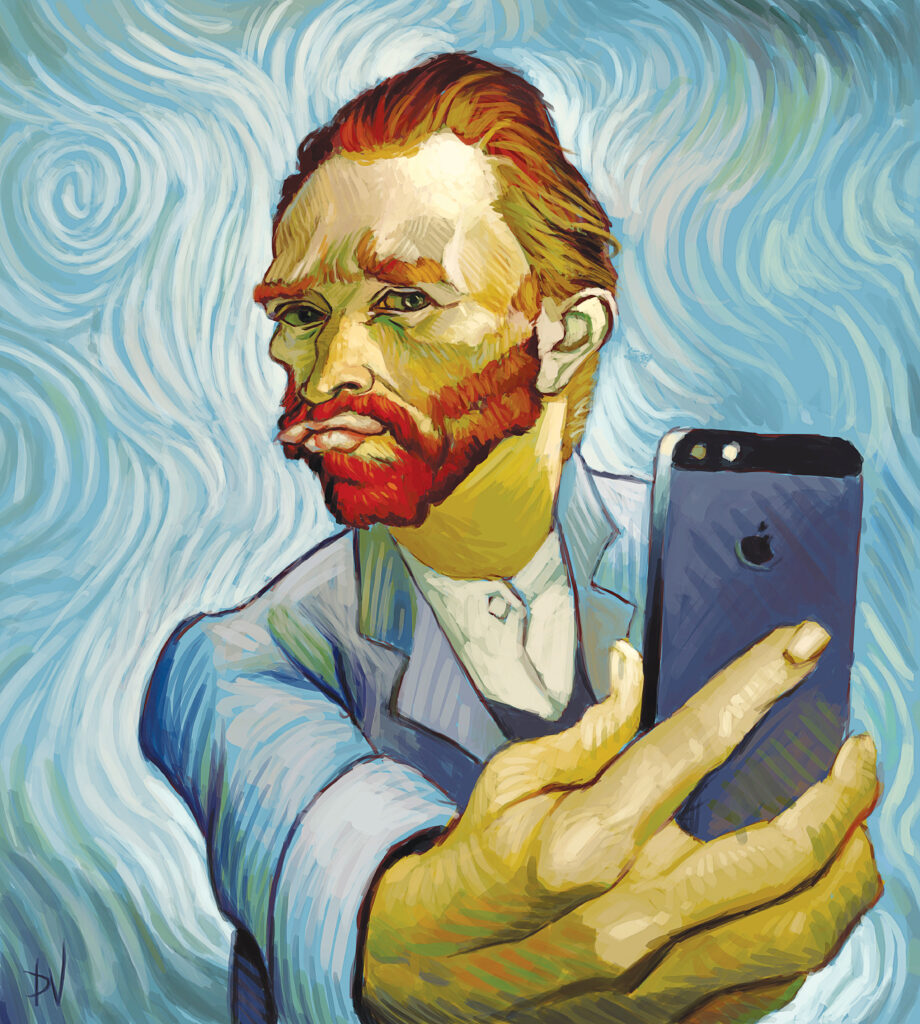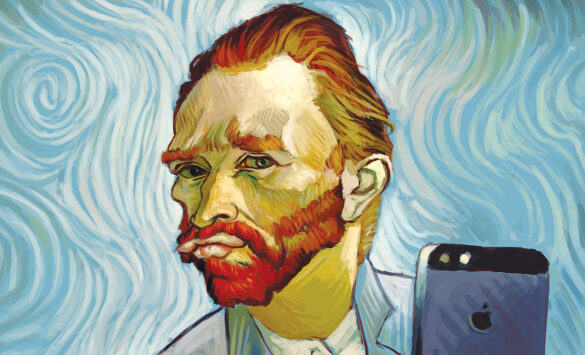By Gordon Silveria
Selfies are nothing new. People have been creating self-portraits since the 15th century; in fact, the first self-portraits were akin to modern day photo-bombs, with artists painting themselves into crowd scenes in historical, mythological or religious paintings. Jan van Eyck’s self-image can be seen in a mirror in the “Arnolfini Portrait” (1434). Diego Velázquez painted himself into “Las Meniñas” (1656), a portrait of the Spanish royal family, essentially setting himself up as the first portrait-bomber, the first truly modern artist. An infant might well have said, “Hey, I thought we were going to get a nice family portrait. What’s Velázquez’ big head doing in the shot?”
Velázquez’ big breakout in painting himself into the portrait was essentially a statement that the artist can be more important than the painting. He proclaimed to the world that this portrait of
royals also staked the claim that the artist is greater than the work itself; the artist becomes one with his art.
Some have speculated that Leonardo da Vinci’s “Mona Lisa” (1503–1506) may actually be a self- portrait of the artist in drag. Though probably not so, it is interesting to ponder that da Vinci, who did have a hidden side to himself, could keep that aspect hidden, yet revealed simultaneously.

Virginia Oldoini Countess of Castiglione (1837–1899), better known as La Castiglione, a mistress of Napoleon, was the first to effectively and exhaustively use the new medium of photography for her selfies. She had herself photographed over 700 times over four decades at a time when just one could be a day-long affair, dressing herself as a variety of historical and mythological figures, usually embedded in elaborate tableaux art directed by the Countess herself. She only laid aside her photography practice after advancing age began to alter her face. She could no longer stand seeing herself.
The queen of self-portraiture in art history has to be Frida Kahlo, who was the first major international artist to use herself as the central subject of almost all of her work. Obsessed with self-image, she famously said, “I paint myself because I am so often alone and because I am the subject I know best.”
Using herself as a subject allowed her to expose herself and explore all her hopes, fears, dreams, accidents, operations, miscarriages, infidelities, the alarmingly public break-ups with famed artist husband, Diego Rivera, as well as her highly publicized affair with Leon Trotksy, prior to his murder by Stalin.
Arguably today’s “Mistress of Selfies” is Kim Kardashian, who posts pictures of herself on social
media that are picked up by news services and published daily, often in excessively revealing costumes. Once, on a vacation to Thailand, Kardashian took 1,200 selfies in a single week’s time. And in 2014, she published a book containing 357 selfies. One wonders if she will stop
taking selfies as she ages, as others have done, or will she develop as an artist and begin
to reveal truly thoughtful insights on herself through her portraits. In the 22nd Century, will the late Kim Kardashian be lauded as one of the great artists of the early 21st Century, or will she be remembered, if at all, as a narcissistic fame-whore?
Before you take that next selfie and post it on your Facebook page or Instagram, ask yourself what the portrait says about you, truly. Is it just another fish-lip photo? Or are you revealing something real and true about yourself? Is it just a selfie or is it art?
